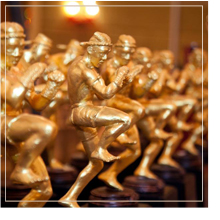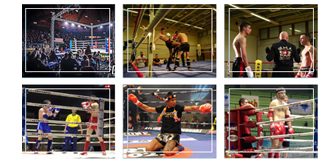![]()
 The participation of women and girls in sports, physical fitness and exercise, has been recorded to have existed throughout history. However, participation rates and activities vary in accordance with nation, era, geography, and stage of economic development. While initially occurring informally, the modern era of organized sports did not begin to emerge either for men or women until the late industrial age.
The participation of women and girls in sports, physical fitness and exercise, has been recorded to have existed throughout history. However, participation rates and activities vary in accordance with nation, era, geography, and stage of economic development. While initially occurring informally, the modern era of organized sports did not begin to emerge either for men or women until the late industrial age.
Until roughly 1870, women’s activities tended to be informal and recreational in nature, lacked rules codes, and emphasized physical activity rather than competition. Today, women’s sports are more sport-specific and have developed into both amateur levels of sport and professional levels in various places internationally, but is found primarily within developed countries where conscious organization and accumulation of wealth has occurred. In the mid-to-latter part of the 20th century, female participation in sport and the popularization of their involvement increased, particularly during its last quarter.
![]()
Battle for equality
Equal representation in organized sport for girls and women is commonly referred to as the “battle for equality” and includes a variety of competing feminist ideologies. Worldwide, the dominant representative sex in sport is male both financially and globally except in the rare case of sports created specifically for girls and women and certain sport disciplines. Sports dominated by women instead of men are few and the majority of organized sports dubbed “women’s sports” or the “women’s game” were created as the female equivalent of sports which were first popularized by men and male athletes.
Over time there have been gradual and increasing efforts by different groups, individuals and lobbies in different countries to find ways which enable women to gain equal representation and support like their male counterparts. This change can be witnessed at the national level in different countries and in women’s professional leagues. In terms of finding ways to acquire better pay and better funding, efforts largely began in the 20th century. A significant historical marker occurred during the 2012 London Olympics where it became the first Olympic games in which women competed in every sport
![]()
In some areas, sex and gender can serve as a selective and primary factor in terms of determining if women’s sports should receive the same treatment as men’s. Whether or not women are as able-bodied as men can serve as the basis of decision making criteria. Gender-based characteristics associated with masculinity and femininity can become the deciding factor for individuals in terms of their potential sports participation, but can also affect organizing sporting bodies where this has been held as a justifiable dismissal of sports equity for female participants.
Although there are various goals and reasons behind organized team sports participation in Western cultures, one perspective claims that sport is principally organized around the political project of physically and symbolically elevating men over women. One study has claimed that notions of audience interest or preference were based on personal beliefs and assumptions rather than evidence or research and that in some cases these beliefs and assumptions were the reason why coverage of men’s professional sports is prioritized
Source: Wikipedia


















